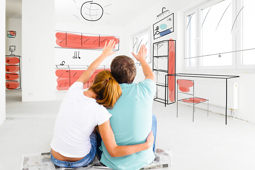1. Enlarge it
Maybe your house just isn’t big enough but you don’t want to move? Do you have enough space around it to build an extension? Or maybe a garage? Even the smallest porch, conservatory or extension can make a big difference especially if you can incorporate old outbuildings. You might even have the budget to consider creating a new basement.

















